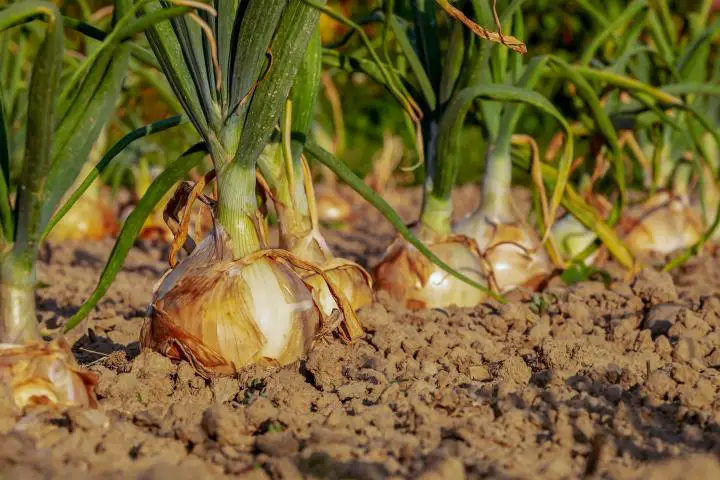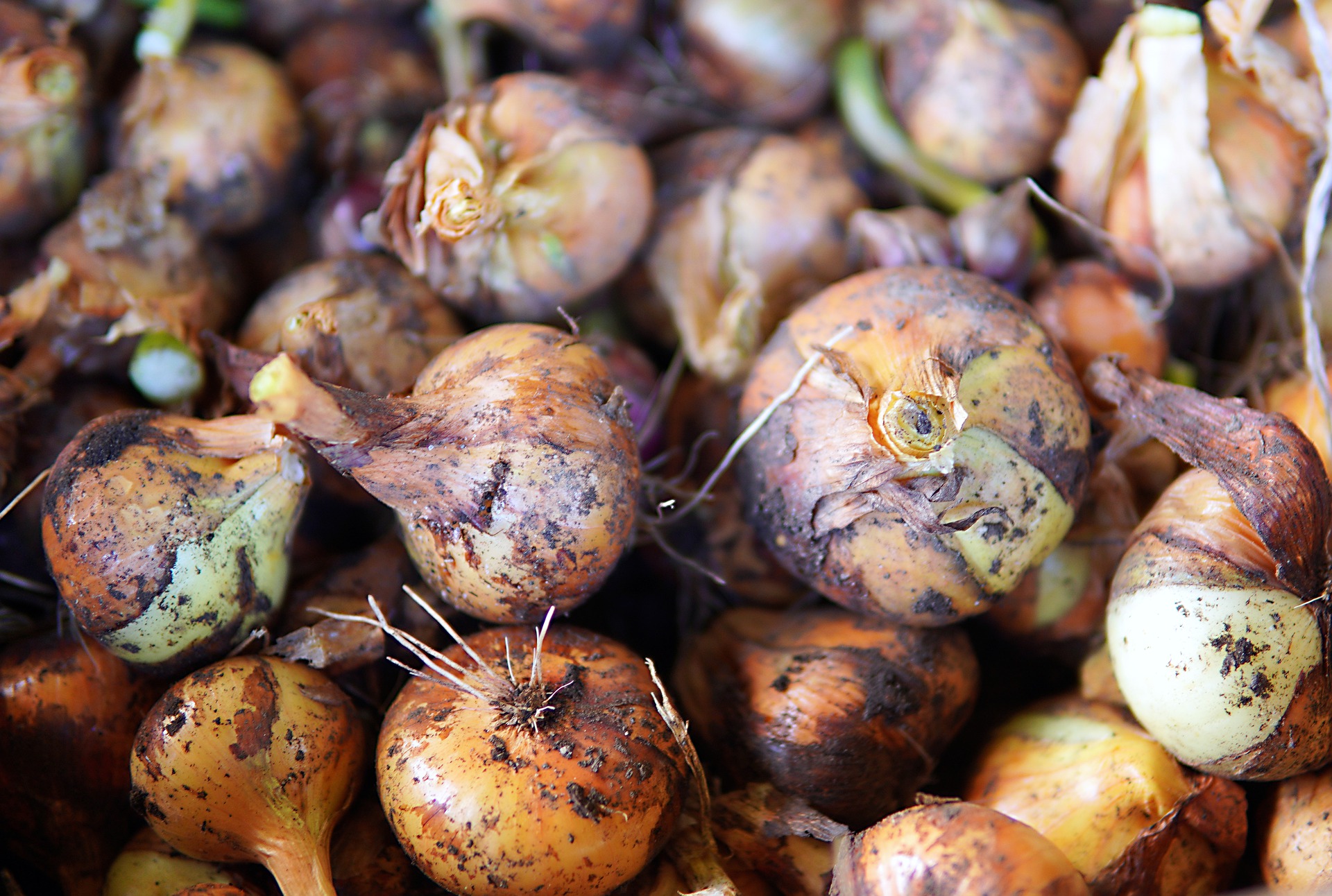Whether eaten raw in salads or as part of stews, gravies, and soups, no meal is ever complete without onions. Onions are versatile vegetables that you can grow effortlessly with a minimum of space. You can grow your onions from seedlings, sets, or seeds.
Regardless of your choice, there are bags of tricks that will mean the difference between a bumper harvest and a dismal one.
From planting onions, growing them, harvesting them, and finally storing them, here’s a complete guide for the perfect crop.
Growing Onions: Onion Seeds or Onion Sets?
When planting onion bulbs, the first decision is either going with the seeds or settling for sets.
Onion sets refer to tiny onion bulbs stocked/sold particularly for gardening. After planting them, you can expect full-size bulbs after around three months.
Why do most farmers prefer onion sets?
- Onion sets establish faster and are simple to plant.
- They are frost-hardy.
- And, onion sets boast of a higher success rate compared to seeds.
What’s the Ideal Time to Plant Onions?
Keep in mind that geography determines the growing season. You can grow onions in spring or fall, typically, where the weather is cool rather than cold.
In other words, some regions have consecutive onion growing seasons. If you live in areas with punishing winters, you’ll have to start planting the seeds indoors to escape the cold.
Preparing the Planting Ground
To achieve a bountiful onion harvest, you need fertile, loose, and well-drained garden soil. If your garden’s soil is clay-heavy, compacted, or rocky, it’ll wreak havoc with bulb development.
However, in cases where the soil is not conducive, adding humus (aged compost) will enhance the texture considerably.

4 Tips to Keep in Mind for Planting Onions
- Choose a sunny section without any shade from other plants. Remember, the more sunlight the onions get, the bigger the bulbs.
- For bigger bulbs, onion plants require consistent nourishment. It is advisable to add manure to the soil in early spring or the fall.
- Throw in one inch of compost in the trench before planting.
- It pays to embrace crop rotation to discourage the spread of pests and diseases. Alternatively, change the location every year.
Planting Onion Sets
Pick onion sets with diameters of approximately ¾-inches and no bigger. Larger sets may give rise to stiff necks or go to seed rapidly.
When planting the sets, ensure that they are 2-6 inches apart.
Keep the bulbs with the pointy end facing up and avoid burying them over an inch beneath the garden soil. Planting the onions too deep will frustrate bulb development.
Caring for the Onions
Think of your onions as leaf crops rather than root crops like carrots or beetroots! Here are a few steps that are crucial to healthy onion crop development.
-
Watering the Onions
Water them regularly after planting the onions, but don’t soak them. Continue doing this until germination occurs; then, you can alter the watering regimen to once/twice weekly.
Note that the watering schedule depends on how hot your region is. Continue watering daily to keep the plants from bolting for extremely hot areas. Bolting is when a stressed onion plant quickens its flower development.
-
Mulch
The moment the bulbs begin to grow, introduce a half-inch layer of mulch of your choice (you can use shredded leaves). The mulch will aid in moisture retention, excellent air circulation, and weed suppression.
Another great mulching option is straw. Straw retains moisture superbly, and it is well seasoned, which discourages insects, unlike other mediums like hay grass.
Typically, there’s no need for supplemental watering where mulch is present. Just ensure that there’s roughly one inch of water every square foot per week.
-
Fertilizing the Onions
Whether you’re planting red onions or green onions, they have a thing for nitrogen, meaning fertilizing every fortnight is essential for bigger and healthier bulbs. The process should continue until the onions push the garden soils away and the bulbs start to form.
Remember that fertilizing is a non-negotiable process since bulb onions are heavy feeders, and without nitrogen, the crop will be disappointing.
Helpful Tip: Chicken manure is a Nitrogen-rich source of fertilizer.
-
Pests to Look Out For in Your Onion Crop
Thrips
Thrips are tiny, fat, tan-colored insects that love onions. To identify the presence of thrips, gently thwack a dark-colored paper against the onion tops. If there are thrips, you’ll easily spot them on the paper. Spray the plants two times daily, four days apart, to get rid of the pest.
Onion Maggots
Onion maggots love laying their eggs at the base of the onion plants. Covering young plants with a fine mesh net and securing it by mounding the soil around the edges will counter the action.
In addition, ensure that you don’t use decaying mulch since the maggots love such conditions.
How Long Until You Can Harvest Your Onions?
Generally, onions take 3-4 months from planting to harvesting. However, if you fancy green onions, also referred to as scallions, harvesting should be done 3-4 weeks after planting.
Otherwise, keep your cool, water as advised, weed, and fertilize the crops.
Before long, beautiful, plump onions will start rearing their crowns. Keep monitoring their development. When the tall, green tops start flopping over and drooping, in addition to the color change from green to brown, it’s harvest time.
Harvesting Onions
The best time to harvest mature onions is in late summer when it’s dry. Harvesting onions in wet conditions lead to insufficient curing, and ultimately, rotting sets in.
After they mature, the tops of the onions (the foliage) turn yellow and start falling over. You should loosen the garden soil around the plant to speed up the drying process.

How to Store Harvested Onions
It is advisable to let your harvested onions cure under the full sun for some days. If the weather doesn’t permit, use a protected area like a barn or garage.
After curing the onions, put the dry bulbs in a mesh bag or nylon stockings and hang them in dry, cool, and well-aired areas. Avoid refrigerating the onions since such damp conditions will spoil them.
Always check the onions regularly for any rotting or sprouting and get rid of them. Also, never store onions with pears or apples since the fruits produce ethylene gas that’ll interfere with their dormancy.
